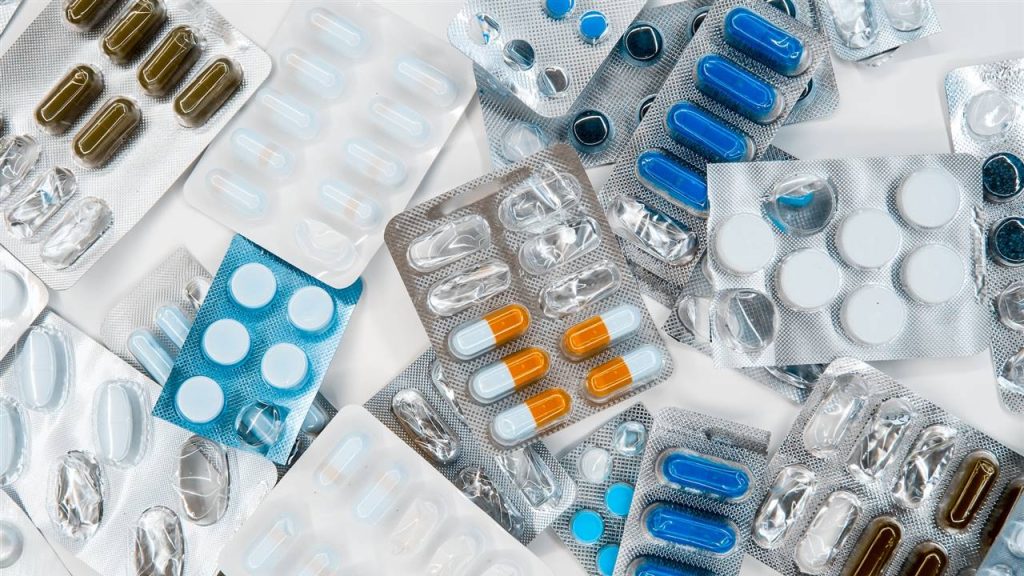After or even during the intake of antibiotics, it makes sense to take probiotics. Preparations with live gut bacteria reduce the risk of antibiotic-associated side effects and then help build healthy gut flora or microbiota.

Conventional medicine still acts as if most antibiotics have little effect on gut microbiota, at least not in the long term. The intestinal flora would recover completely within a few weeks of stopping taking antibiotics. That is why doctors do not usually accompany the prescription with another of probiotics or feeding tips.
However, at least two studies have shown that this is not the case. Antibiotics modify the intestinal flora over a significantly long period of time.
THE GUT MICROBIOTA DOES NOT RECOVER COMPLETELY
Researchers at the Marine Biological Laboratory in Woods Hole, Massachusetts (USA), under the direction of Dr. Mitchell Sogin, demonstrated with the help of a very precise genetic analysis method that after six months of antibiotic treatment part of the microbiota had not recovered.
For this study, conducted in collaboration with Stanford University (in Palo Alto, California), scientists analyzed the composition of the gut microbiota in healthy adults who had ingested an antibiotic over a period of 5 days.
At the start of treatment, between 3,300 and 5,700 different types of bacteria could be detected in the participants. In the course of antibiotic treatment, one-third of the bacteria were severely depleted.
For all other types of bacteria, the proportions changed, so that bacteria that were once rare, then were more common, while strains that were once common suddenly became rare.
This pathological bacterial imbalance is called dysbiosis. All participants in the Woods Hole study were diagnosed with dysbiosis after completing antibiotic treatment.
GUT FLORA REMAINS ALTERED 6 MONTHS AFTER ANTIBIOTICS
In another study, published in Nature Microbiology, researchers from the University of Copenhagen confirmed the above results. They gave 12 healthy young men 3 different antibiotics for 4 days. The drugs led to an almost complete loss of gut microbiota.
Subsequently, harmful bacteria from the Clostridial family recovered faster, while beneficial bacteria were slow to arrive. Over the course of the next 6 months, the gut microbiota slowly recovered, but did not reach its original state, as 9 beneficial bacterial strains were missing.
Study leader Professor Oluf Pedersen, from the Novo Nordisk Foundation’s Center for Basic Metabolic Research, explained that “broad-spectrum antibiotics affect the diversity of gut flora and should therefore only be administered when there is evidence of an infection.”
WHAT PROBIOTICS SHOULD BE TAKEN AFTER ANTIBIOTICS?
Probiotics are preparations (capsules or fermented liquids) that contain live strains of gut bacteria. If the gut microbiota has been severely depleted by antibiotics, ingested bacterial strains settle and help rebuild healthy gut flora.
It is best to start taking probiotics while taking antibiotics and continue afterwards, as in some cases they can prevent antibiotic-related diarrhea.
- Recommended probiotics are the yeast Saccharomyces (S.) boulardii, Lactobacillus GG, Lactobacillus plantarum, Lactobacillus (L.) reuteri, L. case, L. rhamnosus, L. delbrueckii subsp. Bulgaricus, Bifidobacterium animalism and S. thermophilus.
It is advisable to purchase a supplement that includes several of these strains or combine at least two supplements with a single strain. As for the dosage, the manufacturer’s recommendations should be followed. You can also ask your doctor for a guideline.
Antibiotic supplementation may be extended for 4 weeks after the end of antibiotic treatment.
In any case, it is advisable to take the probiotic as far as possible from the antibiotic (for example, one in the morning, the other in the evening) and ideally just before meals or directly with meals.
IT IS ALSO NECESSARY TO TAKE PREBIOTICS
Unlike probiotics, prebiotics are not probiotic bacteria, but substances that serve as food for beneficial gut bacteria. The better the diet of beneficial gut bacteria, the better they can multiply and the faster the microbiota as a whole will recover after taking antibiotics.
- Prebiotics can include foods rich in inulin such as artichokes, onions, garlic, asparagus, leeks, dandelion leaves and oats.
- Prebiotically active substances can also be taken as a dietary supplement, for example, GOS (galactooligosaccharides) and FOS (fructooligosaccharides).
Inulin can cause swelling in sensitive people. Therefore, if you take it as a supplement, start with very small amounts, which are often sufficient, and increase them slowly, if desired, to the dosage recommended by the manufacturer.
WHAT NOT TO EAT AFTER TAKING ANTIBIOTICS?
Proper nutrition is very important during and after antibiotic consumption. Sweets, sugary drinks, cakes, pastas and white bread favor colonization by potentially pathogenic fungi. Products with sugar and white flour are taboo during and after taking antibiotics.
It is also advisable to limit the consumption of salt and fats, as in excess they are related to dysbiosis.
WHAT TO EAT TO PROMOTE THE DEVELOPMENT OF INTESTINAL BACTERIA?
- A vegetable diet, low in salt and fat, containing probiotic foods (sauerkraut, vegetable yogurt, kombucha, etc.) and that is rich in fiber (from vegetables, fruits, legumes and whole grains such as oats) is especially indicated after taking antibiotics).
- Turmeric can also be integrated into the diet, as it promotes the balanced development of the intestinal microbiota.
- Omega-3 fatty acids favor the diversity of the intestinal flora, with the settlement of many different strains of bacteria. These fatty acids are found in walnuts, flax and chia seeds, and algae supplements with EPA and DHA.
WHAT ELSE CAN BE DONE TO PROMOTE THE DEVELOPMENT OF INTESTINAL FLORA?
You should also ensure a lot of physical exercise, as it has a decisive influence on the composition of the intestinal flora, even with a less favorable diet.






